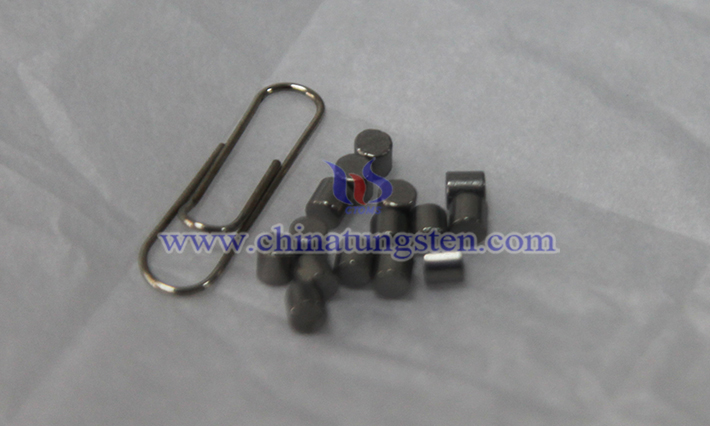Factors Affecting the Surface Microstructure of Barium Tungsten Electrode
- Details
- Category: Tungsten Information
- Published on Monday, 26 May 2025 17:28
- Written by Zhenghua
- Hits: 38
Barium tungsten electrode is an electrode material widely used in the field of electron emission, and its surface microstructure has a decisive influence on electron emission performance, thermal stability and service life. The surface microstructure mainly includes characteristics such as grain size, porosity, surface morphology and microscopic defects, which directly affect the work function, electron emission uniformity and thermal fatigue resistance of the electrode.

The main factors affecting the surface microstructure of barium tungsten electrode are as follows:
1. Material Composition
The ratio of barium (Ba) and tungsten (W) is the key factor in determining the surface microstructure of the electrode. Tungsten, as a matrix material, has a high melting point and good mechanical strength, while barium can effectively reduce the work function and improve the electron emission performance.
Barium tungsten ratio: Too high or too low barium content may lead to uneven distribution of surface barium atoms, affecting the emission efficiency.
Additives: In order to further optimize the surface microstructure, rare earth metals (such as lanthanum, cerium) and other additives are often added to the barium tungsten electrode. These elements can refine the grains, reduce grain boundary defects, and improve the density and stability of the surface.
2. Preparation Process
The preparation process of the barium tungsten electrode has a significant impact on its surface microstructure. Parameters such as sintering temperature, sintering atmosphere and pressing process in the preparation process directly determine the density, porosity and crystal structure of the electrode.
Sintering temperature: High temperature sintering can promote the diffusion and fusion of barium and tungsten, improve the density of the electrode and reduce the porosity. The dense microstructure helps to form a smooth surface and reduce scattering and local hot spots during electron emission.
Sintering atmosphere: Using a reducing atmosphere (such as hydrogen) or vacuum sintering can effectively prevent the oxidation of barium and tungsten, ensuring the purity and stability of the surface microstructure.
Pressing process: The pressing pressure and molding technology in the powder metallurgy method will affect the initial density of the electrode, and then affect the microstructure after sintering. Higher pressing pressure helps to reduce porosity during sintering.
3. Working Environment
During the use of barium tungsten electrodes, the working environment (such as temperature, gas composition, vacuum degree, etc.) will have a continuous impact on its surface microstructure. Harsh environments may cause degradation of the surface microstructure.
Working temperature: In a high temperature environment, grain growth, volatilization of barium atoms or surface reconstruction may occur on the electrode surface, affecting the electron emission performance.
Gas composition: Active gases such as oxygen and water vapor in the working environment may react with the electrode surface to form an oxide layer or corrosion pits. For example, in an oxygen-containing environment, oxides such as BaO or WO₃ are easily formed on the surface of the barium tungsten electrode, resulting in surface roughening and uneven electron emission.
Vacuum degree: In a high vacuum environment, the risk of oxidation and contamination on the electrode surface is reduced, which helps to maintain the stability of the microstructure. When the vacuum degree is low or there is residual gas, the surface microstructure may be degraded due to gas adsorption or chemical reaction.

4. Surface Treatment Technology
Surface treatment technology can optimize the microstructure of barium tungsten electrodes. Commonly used methods include chemical cleaning, heat treatment and coating technology.
Chemical cleaning: Remove surface oxides and contaminants through acid or alkaline washing, restore surface smoothness and purity, and improve electron emission performance.
Heat treatment: High temperature annealing in an inert atmosphere to eliminate residual stress in the preparation process, promote surface atomic rearrangement, and optimize the microstructure.
Surface coating: Coat the electrode surface with a protective layer (such as carbide or nitride coating) to improve oxidation resistance and corrosion resistance and protect the microstructure from environmental influences.
5. Mechanical Stress and Thermal Cycling
In practical applications, mechanical stress and thermal cycling can cause fatigue and damage to the surface microstructure.
Mechanical stress: Mechanical stress to the electrode during installation or use may cause surface cracks or deformation, destroying the integrity of the microstructure.
Thermal cycling: Frequent temperature changes can cause thermal stress, causing surface microcracks or grain boundary fractures. For example, in electron tube applications, thermal cycling of the electrode during startup and shutdown may cause fatigue damage to the surface microstructure, affecting service life.
- Chinatungsten Online: www.chinatungsten.com
- CTIA GROUP LTD: en.ctia.group
- Tungsten News & Price: www.ctia.com.cn
- Molybdenum News & Price: news.molybdenum.com.cn
- Tel.: 86 592 5129696; Email: sales@chinatungsten.com





 sales@chinatungsten.com
sales@chinatungsten.com